Best Golf Grips 2025
We take a look at some of the best golf grips currently available on the market
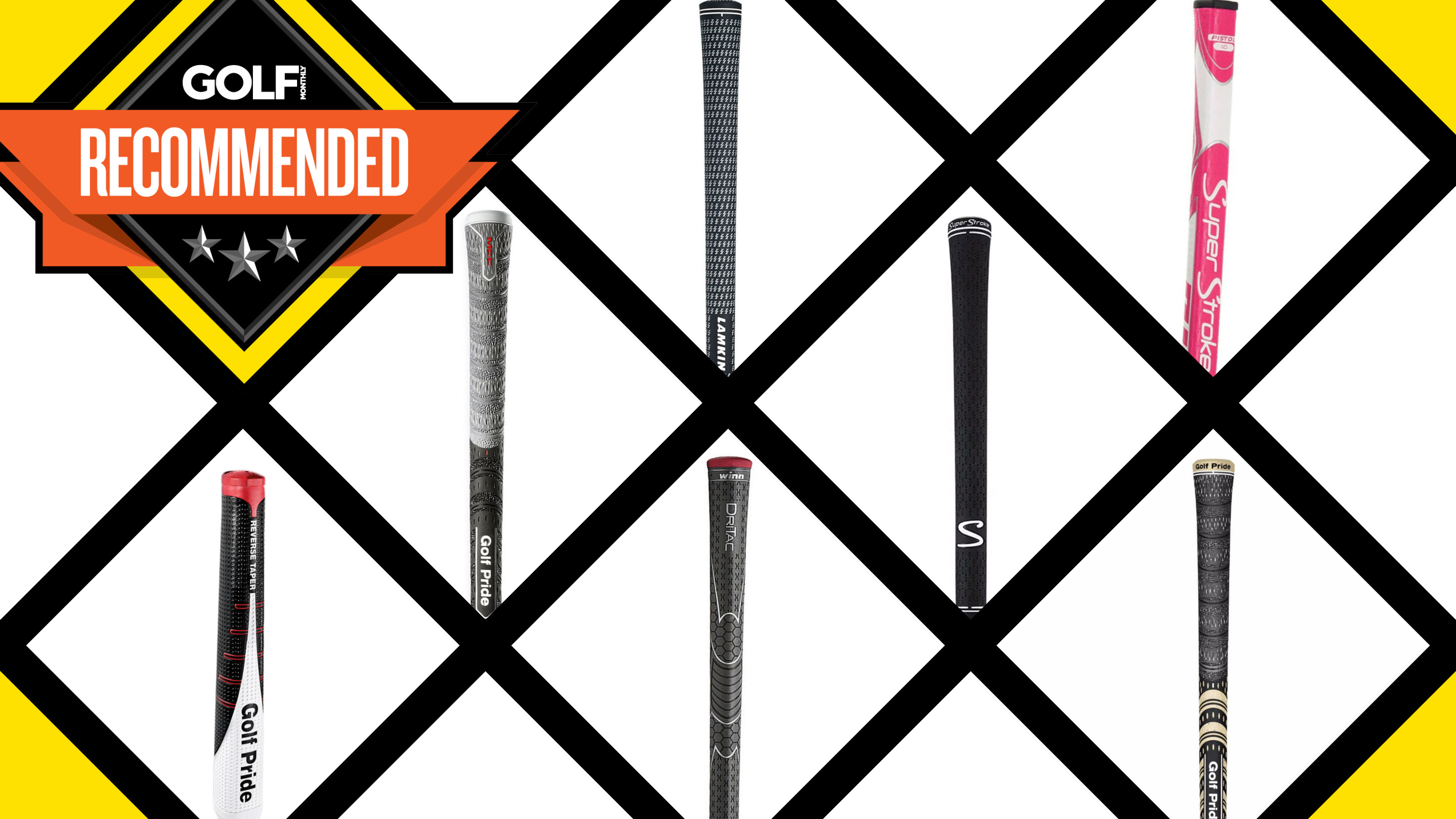

While the grip might be an easy piece of equipment to overlook, its importance can’t be overstated. As the only point of contact with your hands, it’s required to deliver both fit and feel to help you make the best swing possible. A grip that’s ill sized for your hands can cause problems beyond discomfort; during contact a grip that’s too small can lead to excess rolling of the hands through impact, while a grip that’s too large might inhibit the hands from setting and then releasing properly. While a stable clubface is the product of good swing mechanics, having a secure grip on the club at all times is a vital component of a well-struck shot.
Worn grips can create similar problems. If your grips have become shiny it’s tough to maintain a solid interface with the hands. At speed this can cause the hands to slip and create disastrous results; it only becomes worse if the grips get wet through rain or perspiration. Worn grips don’t just lose their tackiness either, they become hard and uncomfortable, reducing feel as well as security.
The best way to find the right grip for you is through a club fit. However, trying out a number of options also is a good way to decide on the size and style that’s best suited to your game. To make either of these worthwhile you’ll want to be confident that you;re gripping the club properly, in the fingers and not the palms and with the heel pad of your lead hand on top of the grip - we have a step-by-step guide to the perfect golf grip if you need some pointers.
To help you further we’ve tested a range of grips and have selected our favorites here, choosing them across a range of criteria, including grips that help you to position the hands correctly and ones that are designed to work in all weather conditions.
Best Golf Grips
Club Grips
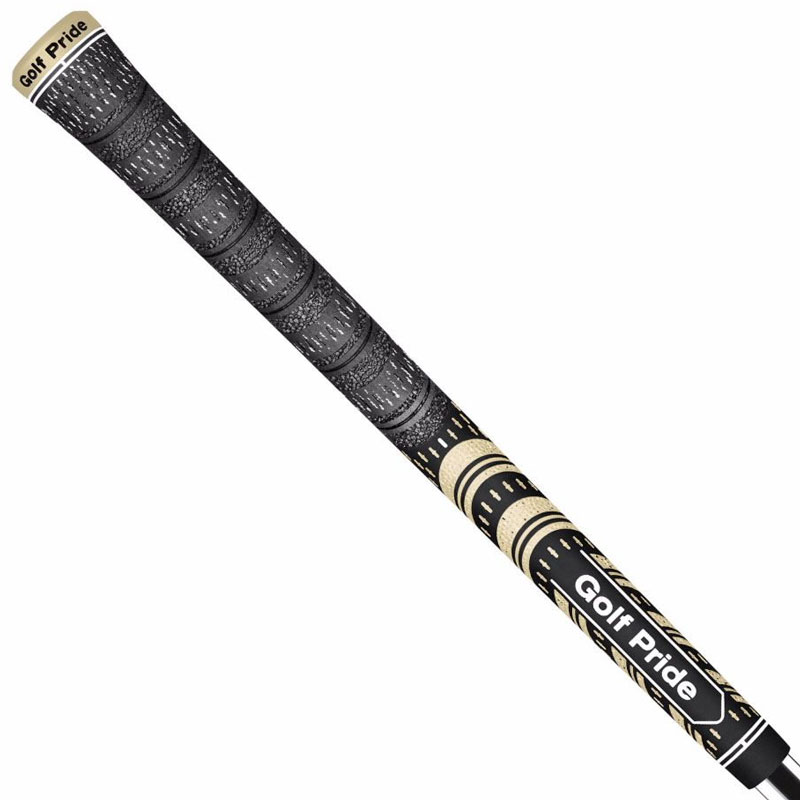
Sizes: Standard, Midsize
+ Good combination of material
+ Grip in all conditions
- Putting them on all your clubs can cost a fair bit
The MCC is proof that a lot of thought can go into producing a golf grip. It’s a favorite of many pros and with good reason. The entire grip features a textured pattern that’s designed to add firmness to the rubber, which aids feedback. But Golf Pride have also added different treatments, hence this being a multi-compound grip, to the top half and the lower half to take into account that most golfers use a golf glove; at the top Brushed Cotton Technology is used to promote better traction between the grip and the gloved hand, while the lower portion of the grip uses a softer rubber that aim to provide feel and comfort for the glove-free trail hand.
All this tech does come with a higher price tag but given the quality of the product, its tour-proven performance credentials and the wealth of color options, we feel it represents good value.
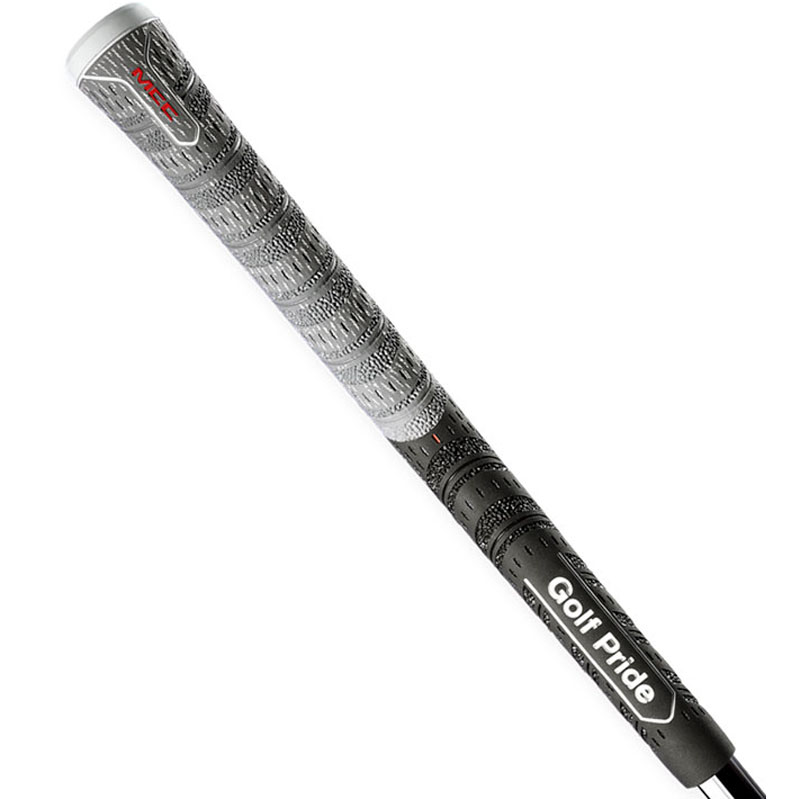
Sizes: Standard, Midsize
+ Significantly more pronounced ridge
+ Hand placement consistency
- Some may enjoy the subtler rib of the original Align series
If you’ve ever watched Scottie Scheffler play golf, you likely have noticed just how much attention the world number one gives to placing his hands deliberately on the club before each shot. Consistently gripping the club properly might feel like it’s become second nature but it’s easy to let bad habits form. Golf Pride’s Align Max grip aims to help with this. It features a ridged section that runs the length of the grip, helping you to position the hands correctly; being the Max model, this protrusion is raised as much is legally allowed by the rules of golf., but even still it feels, in the hands, like a training aid rather than a conventional grip. If you like the concept but want a subtler version, then the regular Align model will likely be a good fit.
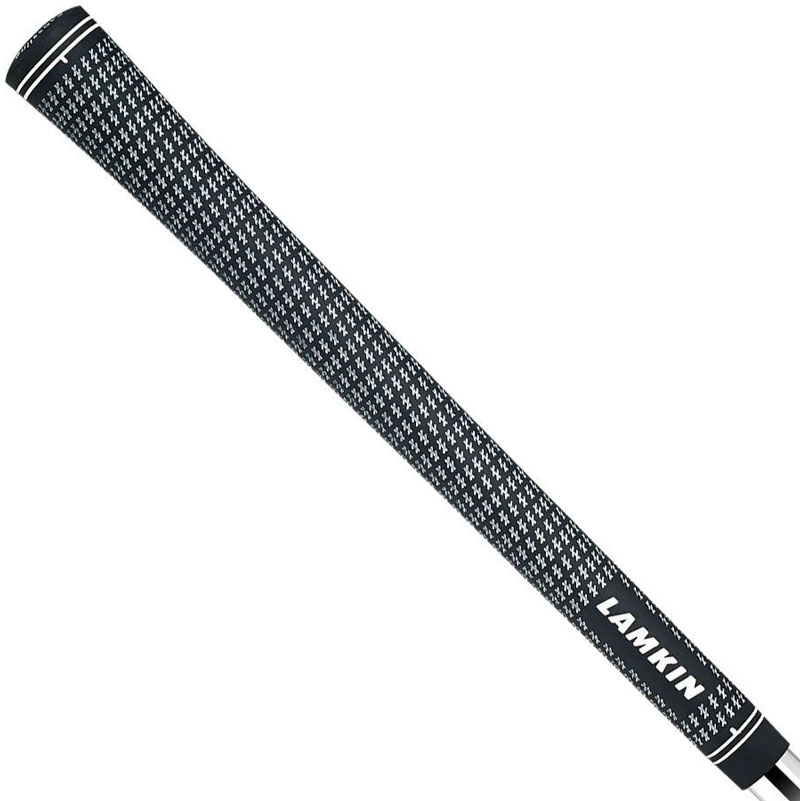
Sizes: Standard
+ Iconic look and feel
+ Relatively good value
- Only one color available
The Crossline has been a staple of Lamkin’s lineup for many years. The ‘If it ain’t broke…’ adage immediately comes to mind, with the grip offering a densely-spaced surface pattern that delivers plenty of traction as well stability in the hand. The feel is on the firmer side, and less tacky than many of its rivals. We feel this lends itself particularly well to the driver, so much so we included it in our best golf grips for drivers guide.
The Crossline has other notable attributes too, namely price and durability. Despite this being a grip used by the pros, it’s really affordable, while the aforementioned firm feel translates to a long life span.
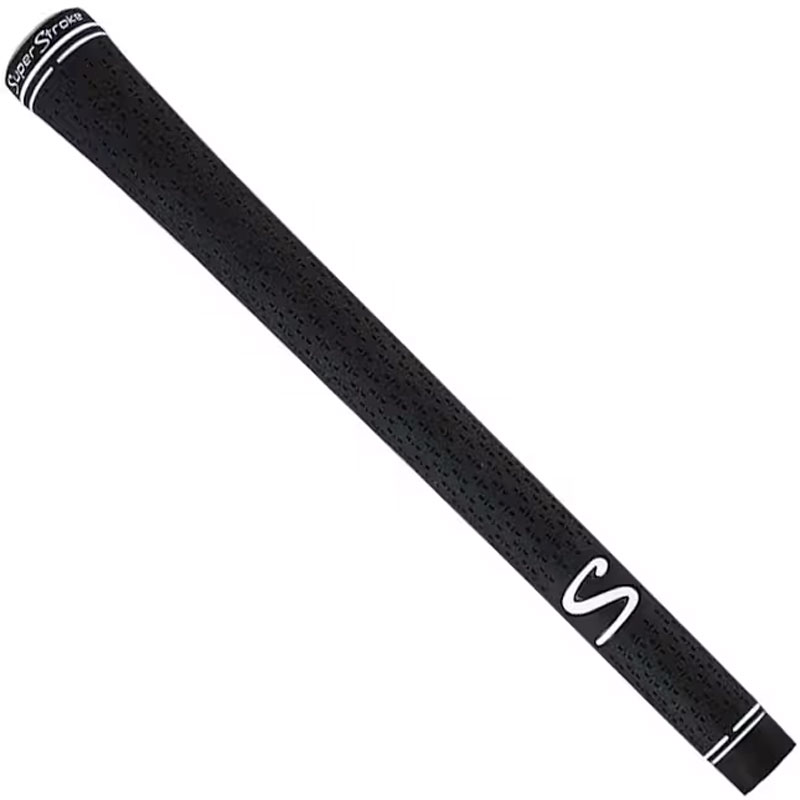
Sizes: Standard, Midsize
+ Engineered rubber for softness and tackiness
+ Good color choice
- More sizes are needed for such a simple-looking design
The S-Tech is another grip that’s used by the pros but still won’t put too much of a dent in your wallet. Seen in the bags of Jordan Spieth and Sergio Garcia no less, its beauty is found in its simplicity. It uses cross-traction technology to help it maintain its level of grip in varying conditions, including the wet; we’d suggest that it sits somewhere in the middle when it comes to the levels of tackiness and softness.
Offered in two sizes - standard and mid - it comes in four color options, including a classic black with white detailing.
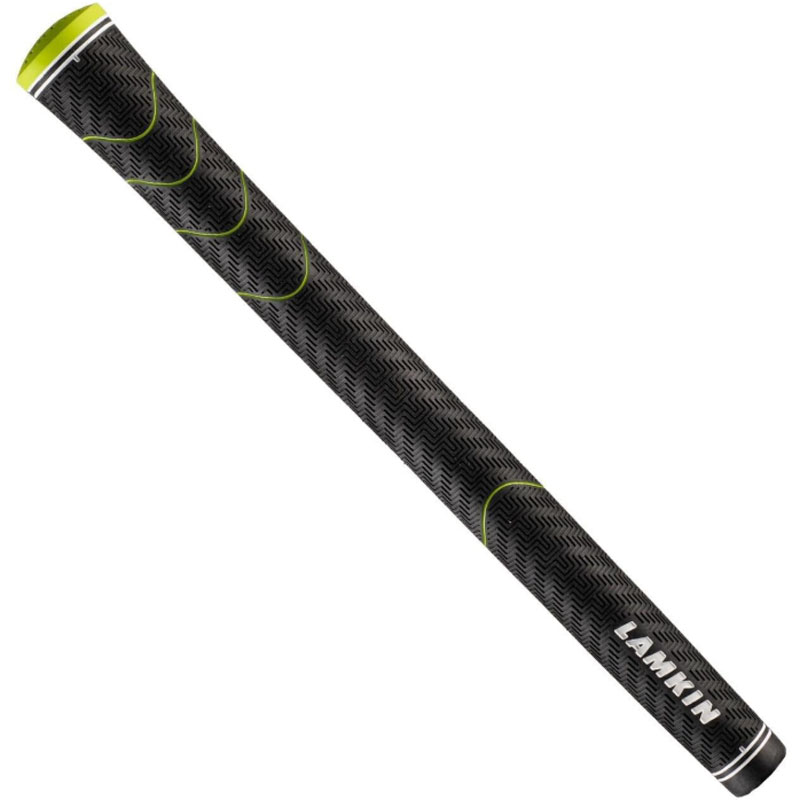
Sizes: Standard
+ Soft but tacky feel
+ Good for golfers who don't wear a glove
- Limited color choices
Here’s another grip that uses a strip on its underside to help you with your hand placement. It’s an effective reminder of just how important it is to position your hands correctly on the grip each and every time. The Sonar+ Tour Calibrate teams this up with what it calls Fingerprint Technology, designed to add traction feel while also encouraging a lighter grip pressure; while the fingers need to hold the club securely, a vice-like grip adds unnecessary tension through the hands, arms and shoulders. Add in the brand’s Genesis hybrid compound and you have a grip that’s well-suited to playing in the rain, or for those who choose not to use a glove a la Fred Couples.
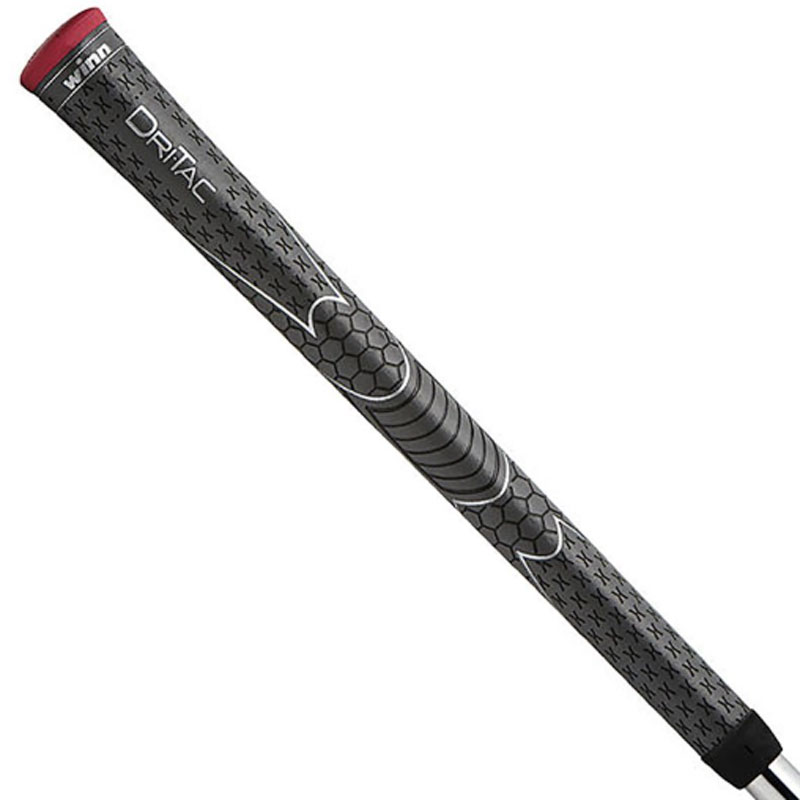
Sizes: Standard, Midsize, Oversize
+ Soft and comfortable
+ Excellent absorption
- Grip lines seem purely cosmetic
Winn has used its expertise in producing grips for a variety of activities, including fishing, tennis and cycling, to create the Dri-Tac, the first golf grip that uses premium polymer as the main compound material. The result, we found, is a grip that’s far tackier than its conventional rubber counterpart, as well as being truly comfortable, too. If you struggle maintaining a good grip on the club, then this extra tackiness could really help, while the softer feel is great if you’re prone to long sessions at the range, where your hands can start to fatigue and even become sore.
With plenty of color choices and a design that promotes correct hand placement, there’s a lot to like about the Dri-Tac grip.
Putter Grips
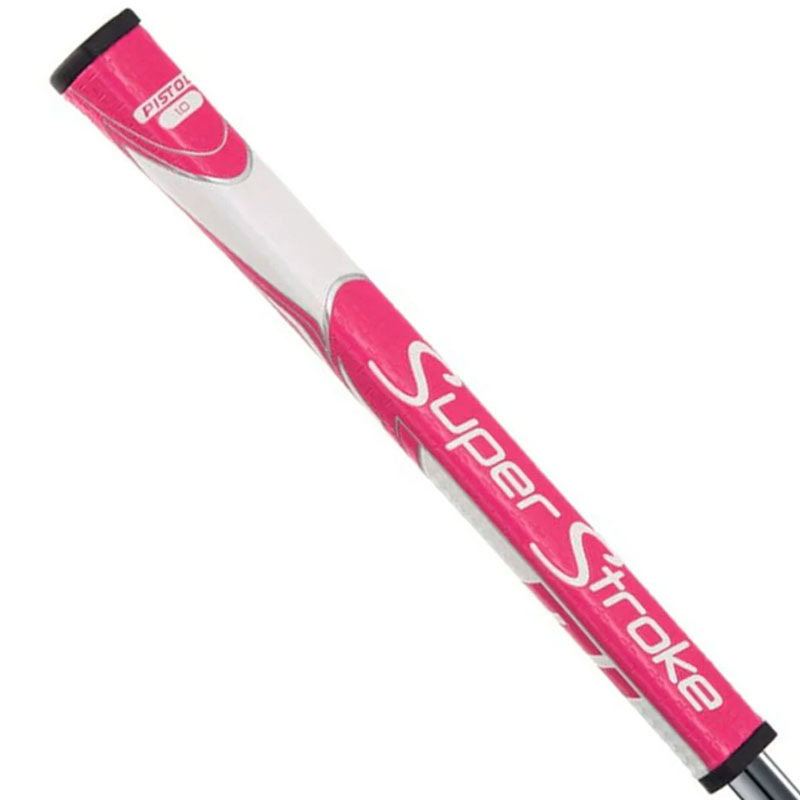
Sizes: Tour, Pistol 1.0, Pistol 2.0
+ Nice, tacky feel in the hands
+ Comfortable shaping
+ Can be counterweighted
- Not overly different to the Traxion Tour
You’ll have likely seen SuperStroke grips adorn many putters on the DP, PGA and LPGA tours. The Zenergy is typical of the brand’s offerings in that it’s both functional and comfortable. Like many putter grips these days it's designed to keep the hands passive through impact, which should translate to less pushes and pulls resulting in you hitting your start line with greater regularity. The grips feature a tacky outer, which really does help you maintain a solid grip, alongside a firmer rubber core. We also like how the texture varies across the grip, promoting feedback and improving comfort. All in all it’s a great grip that aids clubhead stability - one of the keys to holding more putts
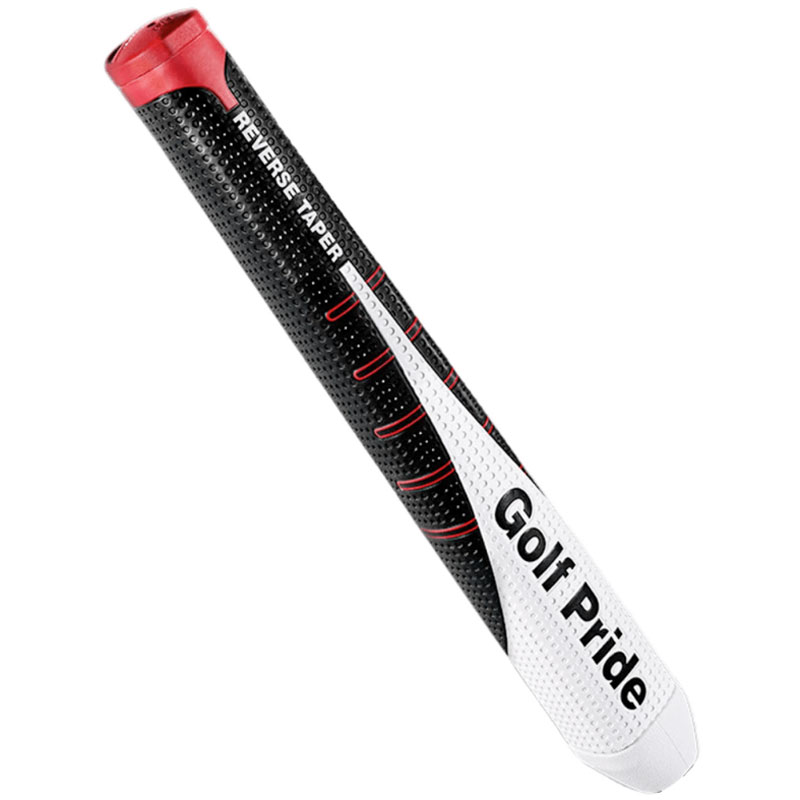
Sizes: Flat, Pistol, Round
+ Soft and easy to hold, very ergonomic
+ Really does quieten the bottom hand
- Not suited to those who prefer a firm, skinny grip
The reverse taper is the headliner here; the upper half of the grip is narrower than the lower section, with the aim of stabilizing the top hand while reducing tension in the lower hand, leading, hopefully, to a smoother stroke. Certainly it’s comfortable, with the taper working as suggested to reduce tension in our hands and arms with noticeable results.
As for the feel, the grip is tacky enough to promote a solid grip but not overly so. Offered in three sizes it’s a good match for those who value ergonomics and have a tendency to get too handsy in their putting action.
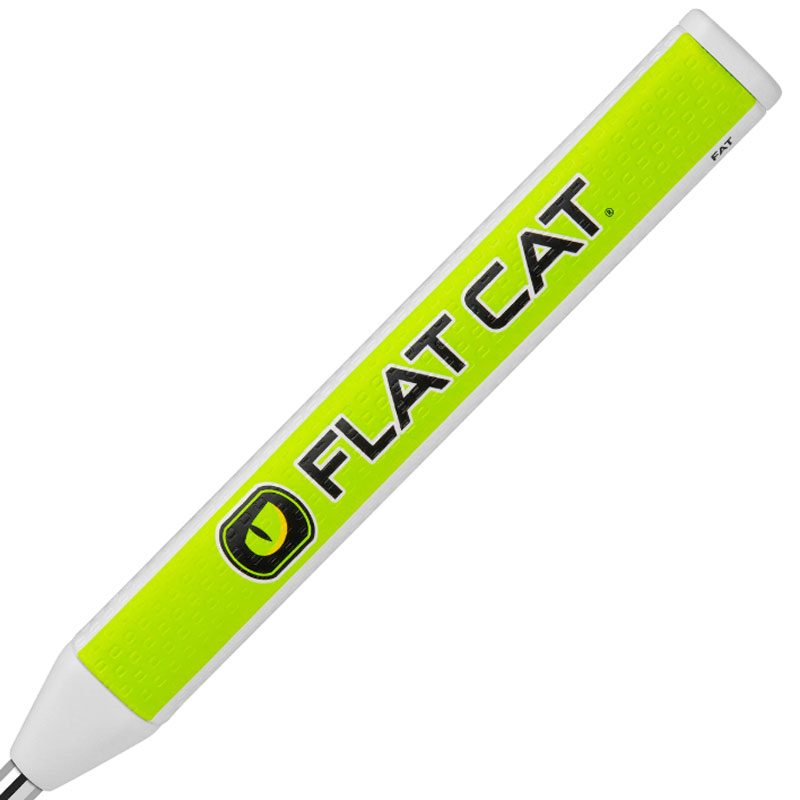
Sizes: Slim, Svelte, Standard, Big, Fat Boy
+ Designed to help square the putter at impact
+ Model often used on Tour
- Takes a bit of time to get used to it
Another putter grip that’s designed to quieten the hands and thus create a more stable face through impact. It does this via a shape that features two flat sides that face each other, keeping the hands facing the target and working in unison, and a polyurethane compound for added comfort.
The design isn’t just applied to a larger, thick sized grip either. If you like the sound of the concept but don’t get on with oversize grips, then the Flat cat also comes in Slim and Svelte sizes, which are often a better fit for blade-style putters. That Justin Rose has used the grip in the past only adds to its credibility and it gets our vote as the grip that’s most likely to help improve your stroke.
How we test golf equipment
All of the products tested at Golf Monthly go through a rigorous and comprehensive review period. This means testing them both in practice and at play, on the range and on the course. We do this over many days, often weeks, to ensure that we really get to know the product and how it performs under a range of conditions. All of this is done by a dedicated team of reviews, who range from PGA pros to higher handicap golfers to make sure that we understand how a particular club or accessory will work for golfers of varying skill levels.
When it comes to golf grips, we pay particular attention to how they perform in different weather conditions. On top of this we assess their comfort over a full 18 holes as well for a longer practice session, as well as rating them for feel, stability and durability. The results are unbiased reviews that are born from the time spent with the grips - manufacturers can never buy a good review at Golf Monthly.
How to choose the best golf grip
Golf grips are worthy of plenty of attention. Get it right and you’ll have a better connection to your clubs, improved feel and increased comfort. While a grip alone can’t radically improve your swing, they can promote a more consistent placing of the hands as well as aiding stability through impact, both key components of better ball striking and putting.
But how do you choose the right grip for you? While there’s no substitution for trying them out, we’ve put together a few considerations that should help you to make a more informed choice.
Size and shape
Grips for your woods, hybrids and irons will typically be offered in two sizes: regular and mid-size, with some also offered in oversize. Essentially these options are there to accommodate different hand sizes and this is a good place to start. If you wear a small golf glove it’s unlikely that you’ll want to be playing with oversize grips. Similarly if you have large hands, a regular size grip might be less than ideal when it comes to promoting a good, stable grip. There are instances where a player with smaller hands may prefer a midsize grip in an effort to become less handsy; we’d recommend getting fitted if you’re unsure or you'd like to experiment a little before committing.
Putter grips not only come in different sizes but also shapes. Again, trying out a variety of styles will help no end but it’s a good idea to try and match the grip shape with your stroke. If you struggle with the start line and maintaining a stable face though impact, then it’s worth looking at oversized putter grips. These popular designs are also a good fit if you use a claw grip, or some variation of as well as often being matched to putter shapes that are also designed to reduce the amount of face twist throughout the stroke. At the other end of the spectrum is the traditional, slim grip. These are often seen on blade-style putters that require a stroke that’s less square-to-square as well as being a good match for those looking for greeted feel and feedback via the hands.
Feel
Feel is subjective but essentially you’ll need to consider how you like the grip to feel in your hands and the degree of feedback you like to receive through them. When it comes to grips for the woods and irons, you’ll need to look at the material used as well as additional features that will influence feel; these could be multi-compounds, corded grips and other designs created to aid traction and feel. Soft or firm is another measurable you’ll want to consider alongside the degree of tackiness. There are models across the spectrum and, once again, there’s no better advice than to try before you buy. Similarly putter grips employ various materials to promote feel, grip and stability and finding the right feel for you is likely to be achieved from sampling a number of styles.
Moisture management
Given that golf is typically played in varying weather conditions, you’ll want to try and find a grip that can handle some moisture. Hot and humid and well and cold and wet can both make it harder to keep a good grip on the club and therefore any help is likely appreciated. There are specific wet weather grips, such as Golf Pride’s MCC, and if you play in wet conditions often then they could be a good fit. Similarly, if you have a tendency to have sweaty palms while playing then finding a grip that retains its tackiness even when damp will help you to maintain a more consistent, and stable connection. The best wet weather gloves can also help with this.
Durability
Most of us replace our grips with greater frequency than we replace our clubs. Because of this it’s worth considering just how durable a grip is. Some of this longevity is affected by how much you play, but certain compounds are more hardy than others. If you want to reduce the number or times you need to get your favorite irons or woods regrouped then choosing a grip with known durability is a wise move.
Color
While black remains the predominant grip color, there are now a huge range of colour choices on offer. You can choose these to match your golf bag, or you could even choose different colors for your woods and your irons. It’s worth considering that while black grips might not catch the eye they do have the advantage of looking clean even after use, something that can’t always be said for lighter colored grips.
Budget
As with any piece of golfing equipment, your budget will play a role in your grip selection. Some of the models that utilize plenty of technology can be far more expensive. If money is tight then selecting a model that’s known to be durable will help you save money in the long run. That said, grips are very much a personal choice and you might find that the one that best suits you is also one of the cheaper options; look in the bags of touring pros and you see plenty of ‘cheaper’ grips being used.
FAQs
How do you fit golf grips?
There are multiple ways to fit a golf grip but, personally, we would recommend seeing your local professional who will likely have all of the regripping equipment. Obviously, you could purchase a kit from Amazon, but regripping a club can be a difficult process, especially without a vice to hold the club securely.
Why are golf grips important?
Arguably, the golf grip is one of the most important parts of the set up, as it's the only part of the club which is in contact with your hands. Being able to maintain a solid grip throughout the swing helps you to maintain a stable clubface which translates to better struck shots.
A grip that’s uncomfortable or the wrong size reduces the chance of you positioning the hands properly and then keeping them there. If you’re a beginner or struggle with consistently gripping the club correctly it’s worth considering a model that has a ridge running up the rear of the grip to aid hand placement. Likewise if you find the club slipping or moving in the hands then finding a correctly sized grip with a good amount of tackiness should help with club security.
How do you known when golf grips are worn?
The most obvious sign of worn grips is a slick, glossy feel and appearance. You may also notice that your grips feel firmer than they should be, with the complexion and look of the worn grip looking considerably different to a fresher portion.
Worn grips can also begin to lose their shape, affected by the pressure points your hands and fingers apply over thousands of swings. Replacing your grips before they become worn can save strokes and should certainly make the game more comfortable.
Subscribe to the Golf Monthly newsletter to stay up to date with all the latest tour news, equipment news, reviews, head-to-heads and buyer’s guides from our team of experienced experts.

Joel has worked in the golf industry for over 15 years covering both instruction and more recently equipment. He now oversees all equipment and video content at Golf Monthly, managing a team of talented and passionate writers and presenters in delivering the most thorough and accurate reviews, buying advice, comparisons and deals to help the reader or viewer find exactly what they are looking for.
One of his career highlights came when covering the 2012 Masters he got to play the sacred Augusta National course on the Monday after the tournament concluded, shooting a respectable 86 with just one par and four birdies. To date, his best ever round of golf is a 5-under 67 back in 2011. He currently plays his golf at Burghley Park Golf Club in Stamford, Lincs, with a handicap index of 3.1.
Joel's current What's In The Bag?
Driver: Titleist GT3, 9°, Fujikura Ventus Black 6 S shaft.
Fairway wood: Titleist TSR3, 15°
Hybrid: Titleist TSi2, 18°
Irons: Titleist T150, 4-PW
Wedges: Titleist Vokey SM10, 50°, 54° and 58°
Putter: LAB Golf DF3
Ball: 2025 Titleist Pro V1x
- Joe FergusonStaff Writer
- Luke FriendFreelance Writer